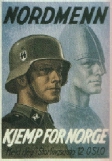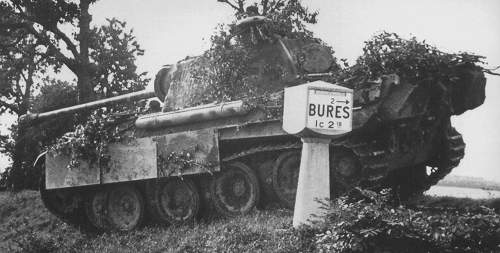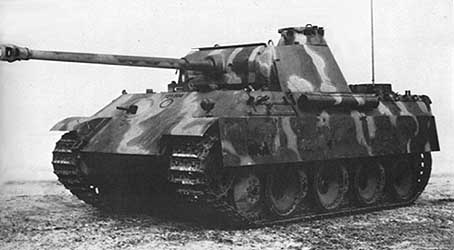|
|
|
Panther

German "Panther"
PzKpfw V Ausf. A/D/F/G
After meeting the Soviet T-34 tank in late 1941 the Germany Army was considerable shaken to find that there was a tank better than its Panzer IV's. After examining captured T-34's a specification was issued in November 1941 for a new design of tank with 60mm of frontal armour, a high velocity 75mm gun, and an all-up weight of 35 tons. Indeed, one school of thought advocated simply to copy the T-34 as it stood - but this was turned down - it was, to say the least, unpatriotic, and, more to the point, there were mechanical features of the T-34 which made copying an impractical proposition for German manufacturers to fulfil.
Designs were submitted by Daimler-Benz and MAN. The Daimler design featured a transversely mounted diesel engine, rear-drive, resilient steel wheels, spring suspension, and a number of other novelties which, while being elegant engineering solutions, were not practical manufacturing propositions. The design was turned down in April 1942 before even the prototype was completed.
The MAN design featured torsion-bar suspension, interleaved road wheels, rear engine and forward drive, and well-sloped armour. It was considered a better proposition than the Daimler design and orders were given for production in September 1942, but at the same time the specification was restated, increasing the frontal armour thickness of 80mm, a change which increased the weight from 35 to 44 tons. This was an unfortunate step, since by that time much of the detail design, of such things as wheels and suspension, had been completed and subcontractors were already at work.
The Panther was armed with a high velocity 75mm gun which fired a 15lb piercing shell at 3,068ft/sec and could pierce 104mm of armour at 2,000m. Also used were a tungsten-cored shot which travelled at 3,937ft/sec and could penetrate 122mm at 2,000m. Either of these projectiles was capable of dealing with a T-34 or KV at any practical fighting range. Moreover the high velocity meant a flat trajectory, which in turn meant less likelihood of missing the target due to a miscalculation of range, and this added up to a very high \lquote first-round hit probability factor\rquote as the statisticians called it.
Production began in November 1942, using a 650bhp engine; after 20 tanks bad been built the engine was changed to a 700bhp model in order to give better performance with the extra weight. From January 1943 the "Ausf D" model was the standard production model, incorporating some minor improvements such as a relocated commander's cupola and a new gearbox. Late in 1943 the "Ausf A" went into production; this lettering is anomaly never explained, but the new model had such improvements as an armoured cupola with periscopes, a ball mount for the hull machine gun, and anti-bazooka side plates over the run of the track.
Finally, in July 1944, came the "Ausf G" model which had a number of changes incorporated for the sake of manufacturing simplicity; the superstructure sides were altered and the slope of the armour increased, which, as a bonus, aided protection. In all 4,814 Panther tanks were produced before the war ended. It was claimed as Germany's best tank design, giving the almost ideal balance between armour, speed, weight and firepower.
An important derivative of the Panther was the Jagdpanther, a self-propelled tank destroyer which used the chassis of the Panther to carry a superstructure having a limited-traverse 88mm gun at the front. Production began in 1944; 382 were made.
Crew: 5
Weight: 45.5 ton
Dimensions: 8.86 x 3.40 x 2.98
Armor (max): 30 - 10 mm
Range: 200 km
Speed (max): 46 km/hr
Main gun: 75mm L/70
No. Produced: 4,801

